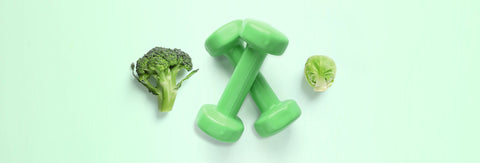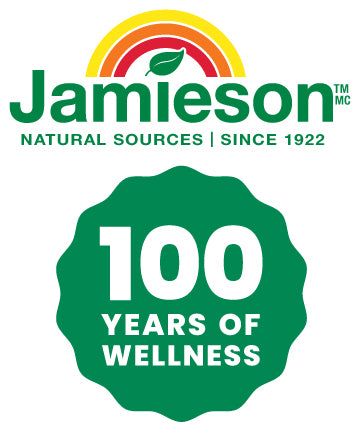When asked “how are you doing?” one of the most common responses is “tired!” Sadly, many people accept being tired as just the way life is. But what if it didn’t have to be? What if one of the main reasons for feeling exhausted all the time, was because your body was missing an important nutrient? This is a very real possibility, as according to Statistics Canada “Iron deficiency is one of the largest nutritional public health problems in both developing and industrialized countries (and)…females of childbearing age are at the highest risk of having low levels of iron.”[1]
What is iron and why do we need it?
Iron is a mineral that plays many different roles within the body, making it extremely important to your health. In particular, it helps produce red blood cells and works to transport oxygen throughout the human body. Iron naturally occurs in a number of different foods, and this might make you think that you are easily getting enough iron from your regular diet. However, what many people don’t know is that there are 2 different types of iron, Heme Iron and Non-Heme Iron. Heme Iron is much more easily absorbed than Non-Heme Iron.[2]
What are the best food sources of iron?
Heme Iron-Rich Foods include:¹
- Seafood (clams, oysters and mussels)
- Red Meat (beef, lamb, venison, and pork)
- Liver (chicken or beef)
- Fish (sardines, halibut, haddock, salmon, and tuna)
- Poultry (chicken and turkey)
Non-Heme Iron-Rich foods include:¹
- Eggs
- Dried fruits, like apricots, prunes, and raisins
- Enriched grain products, like breakfast cereal and pasta
- Legumes such as beans, lentils, peas and soybeans
- Some vegetables like asparagus and spinach
Those who are vegetarian or stick to a mostly plant-based diet can be more prone to iron deficiency!
What happens if I don’t have enough iron?
One of the most common conditions of iron deficiency is called Iron Deficiency Anemia. This occurs when the body lacks enough healthy red blood cells. Red blood cells are required to carry oxygen (also called hemoglobin) to our body’s tissues. The most common symptom that can occur is being tired and short of breath.[3] Take our questionnaire below to see if you might have low iron levels
Do you have any of the following symptoms? If so you could have low iron levels / Iron Deficiency Anemia:²[4]
|
Brittle nails |
|
Chest pain |
|
Cold hands and Feet |
|
Dizziness or being lightheaded |
|
Fast heartbeat |
|
Fatigue |
|
Hair loss |
|
Headache |
|
Inflammation or soreness of your tongue |
|
Pale skin |
|
Poor appetite |
|
Restless legs |
|
Shortness of breath |
|
Unusual cravings for non-nutritive substances (like dirt, ice, or starch) |
|
Weakness |
What can cause low iron levels?
-
Diet. Not eating enough foods with iron (see above). Vegetarians are at an even greater risk, because plant-based Non-Heme Iron foods are harder to absorb than animal-based foods with Heme Iron. The iron found in the food we eat, should be absorbed into our bloodstream through the lining of the small intestine, but there are other nutrients required to help absorb iron, including having enough vitamin C. This is why it is important to eat foods high in vitamin C,such as broccoli, citrus fruits, kiwis, leafy greens, peppers and strawberries at the same time as eating non-heme iron foods.¹
-
Certain health conditions that can make iron absorption more difficult. Any intestinal disorder which affect the intestine's ability to absorb nutrients, such as celiac disease, can lead to iron deficiency anemia. If part of your small intestine has been surgically removed or bypassed, this could also affect your ability to absorb iron as well as other nutrients.²
-
Without iron supplementation, iron deficiency anemia is common during pregnancy. Pregnant women require more iron to support the increase in their red blood cells, which supply the growing baby, in particular normal brain development. During the 3rd trimester, the baby will also begin storing up iron, which it will need during its first six months of life. A lack of iron during pregnancy can cause: cardiovascular stress, fatigue, a lowered resistance to infection, reduced work capacity, and iron deficiency. Iron deficiency anemia is the most common nutritional deficiency during pregnancy, which can lead to: premature delivery, low birth weight, and an increased risk of infant mortality.[5] Health Canada’s recommended dietary allowance (RDA) for pregnant women is 27 mg.[6] Many prenatal vitamins include iron, so before taking an additional iron make sure to check the dosage with your doctor or midwife.
-
Women with heavy periods are at risk of iron deficiency anemia because they lose blood during menstruation. Even those with normal menstruation may be more at risk when combined with a lowered iron diet. Certain health conditions such as peptic ulcer, a hiatal or a colon polyp can cause slow, chronic blood loss within the body, leading to iron deficiency anemia. The regular use of certain common pain relievers such as aspirin can also cause gastrointestinal bleeding.²
-
Those who routinely donate blood Donating blood can also deplete iron stores, leading to an increased risk of iron deficiency anemia. However, this can be a temporary problem remedied by supplementing with iron or eating more iron-rich foods. If you're told that you can't donate blood because of low hemoglobin, talk to your health care practitioner.
According to the research journal The Medical Clinics of North America “The 2 main etiologies (causes) of iron deficiency are blood loss due to menstrual periods and blood loss due to gastrointestinal bleeding. Beyond anemia, lack of iron…[causes] fatigue, hair loss, and restless legs.4
Why take a supplemental iron?
Mild iron deficiency can have a number of unpleasant symptoms (see the questionnaire above). Yet if it is left untreated, iron deficiency anemia can become severe and lead to health conditions including heart problems, problems during pregnancy and increased susceptibility to infections. If you are concerned you are not getting enough iron in your diet, supplementing is an easy solution.
References
[1] Statistics Canada. Iron sufficiency of Canadians, 2009 to 2011. Accessed Aug 12 2019 at: https://www150.statcan.gc.ca/n1/pub/82-625-x/2012001/article/11734-eng.htm
[2] Health Canada. Iron. Acccessed Aug 12, 2019 at: https://www.canada.ca/en/health-canada/services/nutrients/iron.html
[3] Mayo Clinic. Iron Deficiency Anemia. Accessed Aug 12, 2019 at: http://www.mayoclinic.org/diseases-conditions/iron-deficiency-anemia/symptoms-causes/syc-20355034
[4] DeLoughery, DG. (2017). Iron Deficiency Anemia. Med Clin North Am. Mar;101(2):319-332.
[5] Health Canada. Prenatal Nutrition Guidelines for Health Professionals – Iron Contributes to a Healthy Pregnancy. Accessed Aug 12, 2019 at: https://www.canada.ca/en/health-canada/services/food-nutrition/reports-publications/nutrition-healthy-eating/prenatal-nutrition-guidelines-health-professionals-iron-contributes-healthy-pregnancy-2009.html
[6] Health Canada. Dietary Reference Intakes Reference Values for Elements. Accessed Aug 12, 2019 at: https://www.canada.ca/en/health-canada/services/food-nutrition/healthy-eating/dietary-reference-intakes/tables/reference-values-elements-dietary-reference-intakes-tables-2005.html




